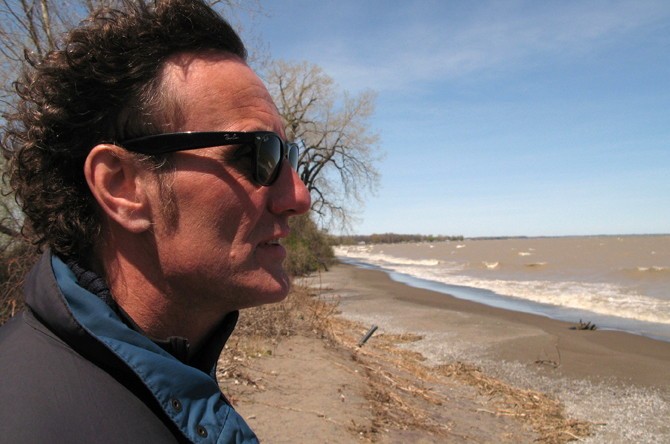It feels like watching something dying
Canadian doc’s examination of our greatest freshwater resource is both breathtaking and bittersweet
Kevin McMahon’s Waterlife is a wonderful, if bittersweet, film.
McMahon, who directed the documentaries Stolen Spirits of Haida Gwaii, An Idea of Canada and MacLuhan’s Wake, sets his sights on water, a basic and indispensable element of life, and one that, though it sustains us, is often an afterthought.
Waterlife follows the trail of water that navigates its way from Lake Superior to the St. Lawrence River as it feeds into the Great Lakes, and flows through centuries of history and the lives of millions of inhabitants on both sides of the border.
McMahon captures the lives of those who live on the shores of these great bodies of water, from communities in Chippewa to the coasts of Chicago and Toronto, and even to the creatures living beneath the surface, such as the beluga whales that inhabit the St. Lawrence.
The focus here is really on how life has changed, evidently for the worse, with the demands of modern North American life exerting enormous pressure on this environment.
Much of the film devotes itself to the fallout of industrial and municipal expansion around the lakes, and how human practices can disrupt the lives of the animals and the people who call this place home.
The introduction of invasive species, such as the lamprey, the zebra mussel and the high-flying Asian carp, by shipping vessels and lock systems has depleted much of the waters’ native fish stocks.
Raw sewage, industrial waste and pharmaceuticals affect the health of the life both in and out of the water, as global warming slowly robs the lakes of their contents. What appears clean and clear on the surface in fact belies toxic sludge and invisible malignant compounds.
McMahon beautifully captures the immense visual beauty of the big lakes with intense cinematography. The film, full of breathtaking moments and inventive camerawork, creates a stunning but disconcerting vision of these massive lakes; as immense and astounding as they are, it is clear that they are dying.
McMahon uses the visual power of the lakes to inspire anger at its destruction, which is evident for all to see.
Tragically Hip frontman Gord Downie narrates Waterlife with earnestness. McMahon’s soundtrack choices are both poignant and fluid, including Robbie Robertston, Brian Eno and Sufjan Stevens providing tracks that are gracefully melancholy, and Dropkick Murphy’s The Gang’s All Here setting the chaotic tone for the transport of frenetic young fish into the lake for restocking.
Published in Volume 64, Number 12 of The Uniter (November 19, 2009)








